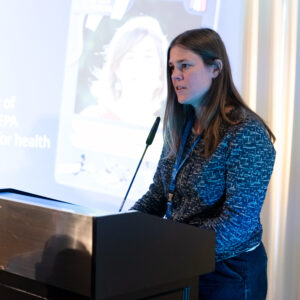Oral
14:20
Policy Initiatives that Support Physical Activity in Rural America: A Scoping Review
Background: Rural U.S. residents experience a disproportionate burden of physical activity (PA) related chronic disease compared to urban residents. Yet, which policy supports have been targeted toward rural PA is unknown.Policy Components: This presentation will describe policy support for PA occurring in rural U.S. areas.Evaluation: A large scoping review was conducted March-June 2020 to identify policy, systems, and environment change approaches occurring in the rural U.S. for PA, healthy eating, and breastfeeding. Search procedures were guided by a science librarian and the PRISMA-ScR and Arksey and O’Malley’s work (2007). Peer-reviewed research was identified using Medline, PubMed, Web of Science, and Agricola. Dissertations were identified using ProQuest Dissertations and Theses A&I. Google/Google Scholar, government, public health, federal nutrition assistance program, Cooperative Extension Services, and related webpages were used to identify grey literature. PA Policy results are reported, and inclusion criteria were: (1) PA focus; (2) about policy factors; (3) specific to U.S. rural populations/places; and (4) English language.Conclusions: In total, 70 sources meeting inclusion criteria were identified and synthesized: 41 original research, 28 grey literature, and 1 graduate research source. PA policy initiatives focused on Complete Streets efforts (i.e., planning/designing/building streets that enable safe access for all users), joint/shared use efforts, Safe Routes to Schools, master plans for greenways, trails, and/or transportation, school health plans, and childcare/school standards. Rural settings for PA policy initiatives included schools (n=42), streets (n=28), trails/sidewalks (n=13), recreation facilities (n=12), and parks (n=9), among others, with many sources referencing multiple settings.Practical implications: Results from this scoping review can inform policy solutions to improve PA in under-resourced rural areas across the U.S.Funding: This study was supported by the Centers for Disease Control and Prevention (CDC) Division of Nutrition, PA, and Obesity, dispersed through Chickasaw Nation Industries.
Submitting Author
M Renee Umstattd Meyer
Population Group
Disadvantaged groups
Study Type
Policy (e.g. policy or guideline development)
Setting
School, Workplace, Community, Transport, Whole System



